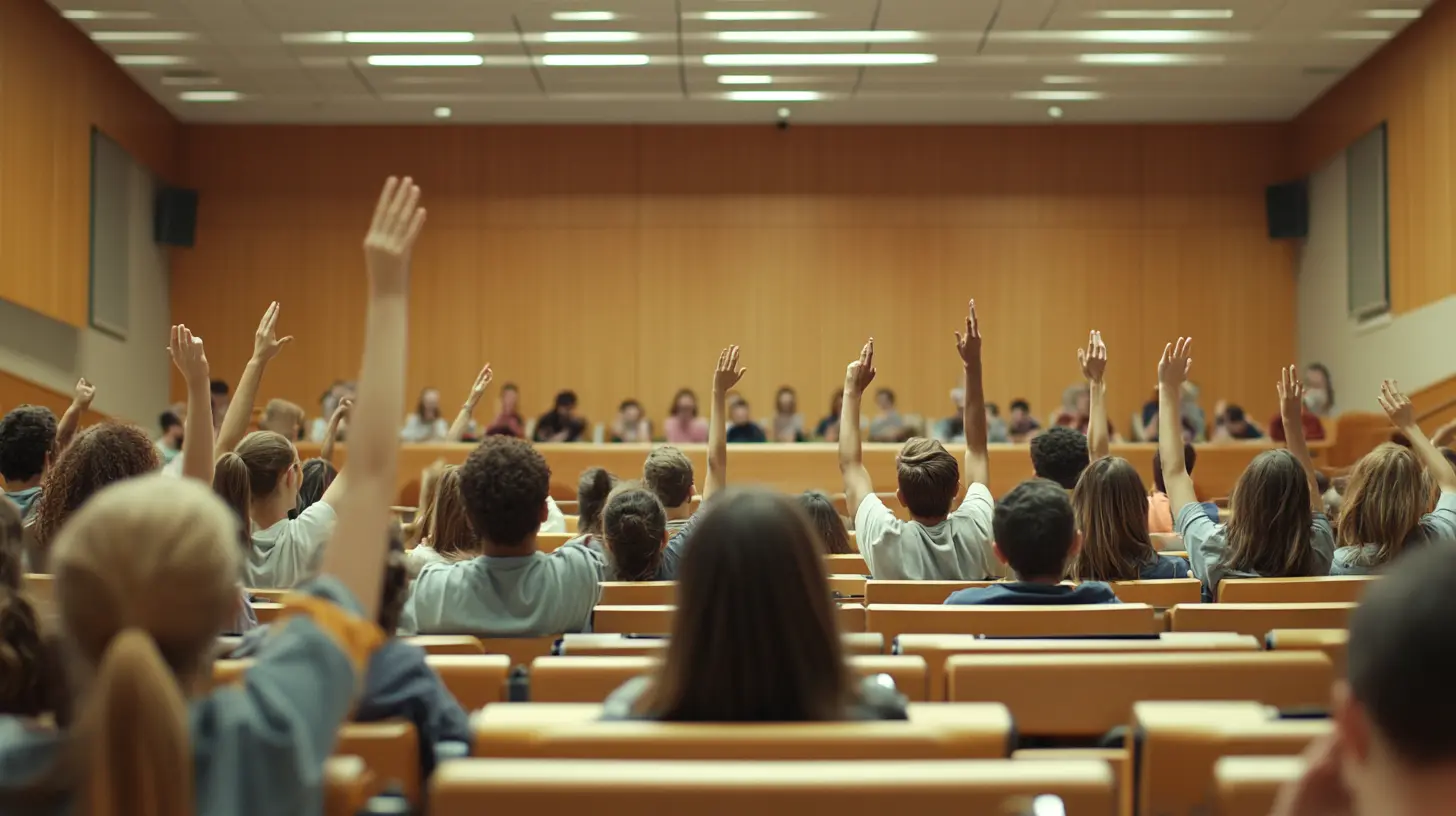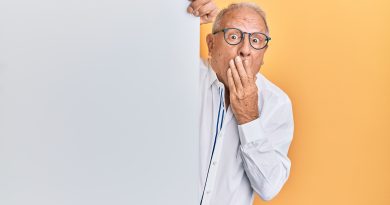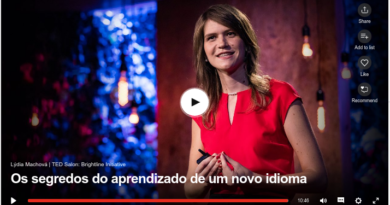Vídeo | The Active Learning Method
Descubra como a aprendizagem ativa pode transformar seu modo de reter conhecimento, participando e colaborando intensamente. Este vídeo do canal Sprouts revela os fundamentos que fazem essa abordagem funcionar, como ela envolve o cérebro em um processo profundo de compreensão e retenção de informações. Conheça as estratégias do renomado físico e Prêmio Nobel, Prof. Carl Wieman, que revolucionam o ensino em salas de aula por meio de etapas práticas e interativas. Veja como a aprendizagem ativa não apenas melhora a compreensão imediata, mas também amplia a memória a longo prazo, em comparação com métodos convencionais.
| Audio | |
|---|---|
Normal | Slow |
| English Transcript | Tradução |
| "Active learning" means you participate, collaborate with others, and apply concepts to the real world. | "Aprendizagem ativa" significa que você participa, colabora com outras pessoas e aplica conceitos ao mundo real. |
| It requires hard mental effort but leads to better retention and an understanding of the material that can be transferred to other situations. | Exige um esforço mental árduo, mas leva a uma melhor retenção e a uma compreensão do material que pode ser transferida para outras situações. |
| To understand why active learning works so well, it helps to know that when our brain decides what to remember, it asks itself two fundamental questions: "Can I understand?" and "Do I need to know?" | Para entender por que a aprendizagem ativa funciona tão bem, é útil saber que, quando nosso cérebro decide o que lembrar, ele faz duas perguntas fundamentais: "Eu consigo entender?" e "Eu preciso saber?". |
| When you ask “Can I understand?” your brain always puts the new information on the foundation of existing knowledge. | Quando você pergunta "Eu consigo entender?", seu cérebro sempre coloca a nova informação sobre a base do conhecimento existente. |
| If the foundation is missing the brain has no idea what to do with it and as a result, it throws it away. | Se a base está faltando, o cérebro não tem ideia do que fazer com essa informação e, como resultado, a descarta. |
| In other words, your brain needs to build foundational neuron connections for new information to attach to - which is both why active learning is more mental work, but also essential for learning. | Em outras palavras, seu cérebro precisa construir conexões neuronais fundamentais para que novas informações se anexem – o que é tanto o motivo pelo qual a aprendizagem ativa é um trabalho mais mental, quanto essencial para o aprendizado. |
| When we ask ourselves: Do I need to know? | Quando nos perguntamos: "Eu preciso saber?". |
| Our brain separates between the material it finds worth to remember and the one it can forget. | Nosso cérebro separa o material que considera digno de ser lembrado daquele que pode esquecer. |
| If it’s unlikely that new information will ever be used again, the brain is smart enough to throw it away. | Se é improvável que a nova informação seja usada novamente, o cérebro é inteligente o suficiente para descartá-la. |
| If your brain finds that the information is needed again, say it could increase your social status, the brain will store it in long-term memory. | Se seu cérebro percebe que a informação será necessária novamente, digamos que ela possa aumentar seu status social, o cérebro a armazenará na memória de longo prazo. |
| To stay there and be easily recalled, you just have to periodically use or think of it. | Para que ela permaneça lá e seja facilmente recordada, basta usá-la ou pensar nela periodicamente. |
| To understand how active learning is applied in classrooms, let’s look at the teachings of Prof Carl Wieman, a Nobel prize-winning physicist and a leading proponent of the method. | Para entender como a aprendizagem ativa é aplicada em sala de aula, vejamos os ensinamentos do Prof. Carl Wieman, físico laureado com o Prêmio Nobel e um dos principais defensores do método. |
| There are four steps to it. | Existem quatro passos para isso. |
| Step 1: Prior to class, the students read up on the fundamentals of the lesson, so they get an idea of the terms and basic phenomena. | Passo 1: Antes da aula, os alunos leem sobre os fundamentos da lição, para que tenham uma ideia dos termos e dos fenômenos básicos. |
| In class, Professor Wieman starts with a brief introduction and then gives questions to solve. | Na aula, o Professor Wieman começa com uma breve introdução e, em seguida, propõe questões para resolver. |
| He will have students use clickers, a little device on which students can answer multiple-choice questions. | Ele fará com que os alunos usem "clickers", um pequeno dispositivo no qual os alunos podem responder a perguntas de múltipla escolha. |
| Alternatively or for more complex problems, worksheets can be handed out. | Alternativamente, ou para problemas mais complexos, podem ser distribuídas planilhas. |
| Step 2: Wieman projects a problem and asks all the students to select one of three possible answers using their clicker. | Passo 2: Wieman projeta um problema e pede a todos os alunos que selecionem uma das três respostas possíveis usando seu clicker. |
| This has two benefits: First, the teacher gets an idea of how many of his students already understand the topic, and second, the students are now focused on the question. | Isso tem dois benefícios: Primeiro, o professor tem uma ideia de quantos de seus alunos já entendem o tópico, e segundo, os alunos agora estão focados na pergunta. |
| They want to know if they were right! | Eles querem saber se acertaram! |
| It is important though that the question is both challenging and interesting. | É importante, no entanto, que a pergunta seja desafiadora e interessante. |
| All this takes less than 5 minutes. | Tudo isso leva menos de 5 minutos. |
| Step 3: Without telling the students how they voted and following Eric Mazur’s Peer Instruction Method — which involves questions, peer discussions, votes and group discussions — the students then discuss the question and their answers with one or two classmates, ideally with someone who disagrees with their own opinion. | Passo 3: Sem dizer aos alunos como votaram e seguindo o Método de Instrução por Pares de Eric Mazur — que envolve perguntas, discussões entre pares, votações e discussões em grupo — os alunos então discutem a questão e suas respostas com um ou dois colegas, idealmente com alguém que discorda de sua própria opinião. |
| During the discussion, the students have to come up with a reason for their answer and why the others may be wrong. | Durante a discussão, os alunos precisam apresentar uma razão para sua resposta e por que os outros podem estar errados. |
| Meanwhile, the instructor is circling around, listening in to gauge student thinking, and answering brief questions. | Enquanto isso, o instrutor circula, ouvindo para avaliar o raciocínio dos alunos e respondendo a perguntas breves. |
| Then there will be a second clicker vote. | Em seguida, haverá uma segunda votação com o clicker. |
| And only now the results will be shown. | E só agora os resultados serão mostrados. |
| Typically the second vote will be much better than the first as students learn a great deal from their discussions. | Tipicamente, a segunda votação será muito melhor que a primeira, pois os alunos aprendem muito com suas discussões. |
| An ideal question will have about ⅓ correct on the first vote and 85% correct on the second. | Uma pergunta ideal terá cerca de ⅓ de acertos na primeira votação e 85% de acertos na segunda. |
| All this takes around 7 minutes. | Tudo isso leva cerca de 7 minutos. |
| Step 4 Now the professor leads a follow-up discussion with all the students to provide feedback, exploring the different reasoning, which one is correct, and importantly, which is incorrect and why? | Passo 4: Agora o professor conduz uma discussão de acompanhamento com todos os alunos para fornecer feedback, explorando os diferentes raciocínios, qual está correto e, o mais importante, qual está incorreto e por quê? |
| Only at the very end, professor Wieman will explain the correct solution and answer follow-up questions. | Somente no final, o professor Wieman explicará a solução correta e responderá a perguntas de acompanhamento. |
| Ascertaining the students' understanding from the questions they ask, he decides if it is time to move on. | Avaliando a compreensão dos alunos a partir das perguntas que fazem, ele decide se é hora de seguir em frente. |
| All of which takes around 10 minutes. | Tudo isso leva cerca de 10 minutos. |
| There are three reasons why active learning works so well. | Existem três razões pelas quais a aprendizagem ativa funciona tão bem. |
| First: The students are actively working on interesting problems. | Primeiro: Os alunos estão trabalhando ativamente em problemas interessantes. |
| And as they all voted for an answer right at the beginning, they have a stake in the outcome. | E como todos votaram em uma resposta logo no início, eles têm um interesse no resultado. |
| That means their brains decide that the information covered is important to be remembered and are hence more receptive for learning. | Isso significa que seus cérebros decidem que a informação abordada é importante para ser lembrada e, portanto, são mais receptivos ao aprendizado. |
| Second: By solving problems alone and in groups they dive deeply into the material. | Segundo: Ao resolver problemas sozinhos e em grupos, eles se aprofundam no material. |
| Explaining to a peer engages novel mental processes. | Explicar a um colega envolve novos processos mentais. |
| As a result they construct new synaptic pathways inside their brains. | Como resultado, eles constroem novas vias sinápticas dentro de seus cérebros. |
| Third: The explanation from the teacher comes only once the students already formed their own thoughts about the concept. | Terceiro: A explicação do professor só vem depois que os alunos já formaram seus próprios pensamentos sobre o conceito. |
| At this point, the explanation makes more sense as the brain can connect the new information to all the thought it had just built. | Nesse ponto, a explicação faz mais sentido, pois o cérebro pode conectar a nova informação a todo o pensamento que acabou de construir. |
| The correct answers have a solid foundation. | As respostas corretas têm uma base sólida. |
| A large body of research has shown big differences in the outcomes between passive and active learning. | Um grande corpo de pesquisa mostrou grandes diferenças nos resultados entre a aprendizagem passiva e a ativa. |
| In one carefully executed experiment, physics instructors taught their course in two ways: some classes were taught in a conventional style and others using active learning. | Em um experimento cuidadosamente executado, instrutores de física ensinaram seu curso de duas maneiras: algumas turmas foram ensinadas em um estilo convencional e outras usando aprendizagem ativa. |
| Even though the teachers were the same and the students were similar, on average the active learners doubled their understanding when they were tested at the end of the course. | Embora os professores fossem os mesmos e os alunos fossem semelhantes, em média, os alunos de aprendizagem ativa dobraram sua compreensão quando foram testados no final do curso. |
| Other experiments have shown that long term retention is higher as well. | Outros experimentos mostraram que a retenção a longo prazo também é maior. |
| Students that take a conventional lecture that is followed by a test, forget around 90% of the material within 6 months. | Alunos que assistem a uma aula convencional seguida de um teste esquecem cerca de 90% do material em 6 meses. |
| In an active learning environment students can retain more than 70% of what they have learned two years later. | Em um ambiente de aprendizagem ativa, os alunos podem reter mais de 70% do que aprenderam dois anos depois. |
| Sometimes teachers show a problem and then demonstrate to the class how to solve it. | Às vezes, os professores mostram um problema e, em seguida, demonstram à turma como resolvê-lo. |
| They believe that they can just transfer their own thinking into the student’s head through an explanation. | Eles acreditam que podem simplesmente transferir seu próprio pensamento para a cabeça do aluno por meio de uma explicação. |
| Unfortunately, for new ideas, a brain doesn’t work that way. | Infelizmente, para novas ideias, um cérebro não funciona dessa maneira. |
| Unless the brain actively constructs those ideas within, it is as if the material was never heard. | A menos que o cérebro construa ativamente essas ideias internamente, é como se o material nunca tivesse sido ouvido. |
| How about you? | E você? |
| Have you ever learned in an active learning environment? | Você já aprendeu em um ambiente de aprendizagem ativa? |
| And if so, how does it compare to learning the conventional way? | E, em caso afirmativo, como se compara à aprendizagem da maneira convencional? |
Contagem de palavras
A tabela abaixo exibe as palavras encontradas neste vídeo, bem como o número de vezes em que aparecem.
Veja também: Para que serve esta tabela?
| Freq. | Palavra | Freq. | Palavra | Freq. | Palavra |
|---|---|---|---|---|---|
| 69 | the | 32 | to | 30 | and |
| 20 | it | 20 | a | 17 | students |
| 16 | is | 15 | of | 13 | they |
| 13 | in | 12 | that | 12 | learning |
| 11 | their | 11 | brain | 10 | active |
| 9 | on | 9 | have | 9 | can |
| 9 | be | 8 | with | 8 | will |
| 8 | an | 7 | questions | 7 | if |
| 7 | for | 7 | as | 7 | all |
| 6 | which | 6 | new | 6 | information |
| 6 | how | 5 | you | 5 | why |
| 5 | were | 5 | understand | 5 | two |
| 5 | second | 5 | one | 5 | more |
| 5 | material | 5 | correct | 5 | at |
| 5 | are | 4 | your | 4 | wieman |
| 4 | when | 4 | up | 4 | this |
| 4 | there | 4 | then | 4 | step |
| 4 | so | 4 | s | 4 | question |
| 4 | know | 4 | i | 4 | first |
| 4 | around | 4 | answer | 3 | what |
| 3 | well | 3 | vote | 3 | understanding |
| 3 | than | 3 | takes | 3 | shown |
| 3 | professor | 3 | problems | 3 | peer |
| 3 | own | 3 | others | 3 | other |
| 3 | or | 3 | only | 3 | now |
| 3 | minutes | 3 | mental | 3 | just |
| 3 | idea | 3 | has | 3 | from |
| 3 | foundation | 3 | explanation | 3 | do |
| 3 | discussions | 3 | conventional | 3 | class |
| 3 | ask | 3 | answers | 3 | about |
| 2 | works | 2 | work | 2 | within |
| 2 | way | 2 | voted | 2 | using |
| 2 | use | 2 | three | 2 | though |
| 2 | thinking | 2 | term | 2 | teachers |
| 2 | teacher | 2 | taught | 2 | student |
| 2 | solve | 2 | right | 2 | retention |
| 2 | result | 2 | remember | 2 | problem |
| 2 | our | 2 | need | 2 | method |
| 2 | means | 2 | long | 2 | learned |
| 2 | leads | 2 | into | 2 | interesting |
| 2 | important | 2 | ideas | 2 | he |
| 2 | forget | 2 | follow | 2 | finds |
| 2 | ever | 2 | environment | 2 | end |
| 2 | discussion | 2 | decides | 2 | course |
| 2 | clicker | 2 | by | 2 | but |
| 2 | brief | 2 | brains | 2 | both |
| 2 | between | 2 | better | 2 | away |
| 2 | asks | 2 | already | 2 | again |
| 2 | actively | 1 | years | 1 | wrong |
| 1 | worth | 1 | world | 1 | worksheets |
| 1 | working | 1 | words | 1 | without |
| 1 | winning | 1 | who | 1 | we |
| 1 | ways | 1 | was | 1 | want |
| 1 | votes | 1 | very | 1 | used |
| 1 | unlikely | 1 | unless | 1 | unfortunately |
| 1 | typically | 1 | transferred | 1 | transfer |
| 1 | topic | 1 | time | 1 | throws |
| 1 | throw | 1 | through | 1 | thoughts |
| 1 | thought | 1 | those | 1 | third |
| 1 | think | 1 | tested | 1 | test |
| 1 | terms | 1 | telling | 1 | teachings |
| 1 | take | 1 | t | 1 | synaptic |
| 1 | style | 1 | store | 1 | steps |
| 1 | stay | 1 | status | 1 | starts |
| 1 | stake | 1 | sometimes | 1 | someone |
| 1 | some | 1 | solving | 1 | solution |
| 1 | solid | 1 | social | 1 | smart |
| 1 | situations | 1 | similar | 1 | show |
| 1 | separates | 1 | sense | 1 | select |
| 1 | say | 1 | same | 1 | retain |
| 1 | results | 1 | research | 1 | requires |
| 1 | remembered | 1 | receptive | 1 | recalled |
| 1 | reasons | 1 | reasoning | 1 | reason |
| 1 | real | 1 | read | 1 | puts |
| 1 | provide | 1 | proponent | 1 | projects |
| 1 | prof | 1 | processes | 1 | prize |
| 1 | prior | 1 | possible | 1 | point |
| 1 | physics | 1 | physicist | 1 | phenomena |
| 1 | periodically | 1 | pathways | 1 | passive |
| 1 | participate | 1 | outcomes | 1 | outcome |
| 1 | out | 1 | ourselves | 1 | opinion |
| 1 | once | 1 | novel | 1 | nobel |
| 1 | no | 1 | never | 1 | neuron |
| 1 | needs | 1 | needed | 1 | multiple |
| 1 | much | 1 | move | 1 | months |
| 1 | missing | 1 | memory | 1 | meanwhile |
| 1 | mazur | 1 | may | 1 | many |
| 1 | makes | 1 | look | 1 | little |
| 1 | listening | 1 | let | 1 | lesson |
| 1 | less | 1 | lecture | 1 | learners |
| 1 | learn | 1 | leading | 1 | later |
| 1 | large | 1 | knowledge | 1 | itself |
| 1 | involves | 1 | introduction | 1 | instructors |
| 1 | instructor | 1 | instruction | 1 | inside |
| 1 | increase | 1 | incorrect | 1 | importantly |
| 1 | ideally | 1 | ideal | 1 | his |
| 1 | higher | 1 | hence | 1 | helps |
| 1 | heard | 1 | head | 1 | hard |
| 1 | handed | 1 | had | 1 | groups |
| 1 | group | 1 | great | 1 | gives |
| 1 | gets | 1 | get | 1 | gauge |
| 1 | fundamentals | 1 | fundamental | 1 | four |
| 1 | foundational | 1 | formed | 1 | following |
| 1 | followed | 1 | focused | 1 | feedback |
| 1 | exploring | 1 | explaining | 1 | explain |
| 1 | experiments | 1 | experiment | 1 | existing |
| 1 | executed | 1 | even | 1 | essential |
| 1 | eric | 1 | enough | 1 | engages |
| 1 | effort | 1 | easily | 1 | during |
| 1 | doubled | 1 | doesn | 1 | does |
| 1 | dive | 1 | discuss | 1 | disagrees |
| 1 | different | 1 | differences | 1 | device |
| 1 | demonstrate | 1 | deeply | 1 | decide |
| 1 | deal | 1 | covered | 1 | could |
| 1 | constructs | 1 | construct | 1 | connections |
| 1 | connect | 1 | concepts | 1 | concept |
| 1 | complex | 1 | compare | 1 | comes |
| 1 | come | 1 | collaborate | 1 | clickers |
| 1 | classrooms | 1 | classmates | 1 | classes |
| 1 | circling | 1 | choice | 1 | challenging |
| 1 | carl | 1 | carefully | 1 | built |
| 1 | build | 1 | body | 1 | big |
| 1 | benefits | 1 | believe | 1 | beginning |
| 1 | basic | 1 | average | 1 | attach |
| 1 | ascertaining | 1 | apply | 1 | applied |
| 1 | answering | 1 | always | 1 | alternatively |
| 1 | also | 1 | alone | 1 | ⅓ |









